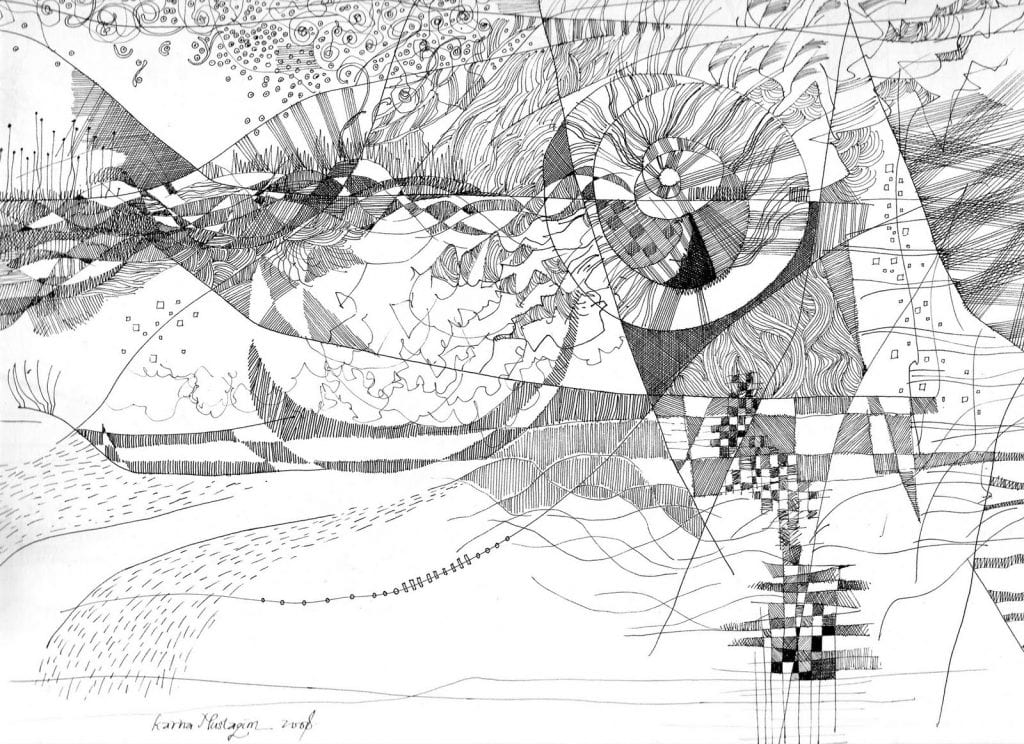An artist made this drawing.
Does the drawing look like a real or imaginary place?

Line drawing by Karna Mustaqim
Lines are an important part of this drawing.
Many artists draw lines to suggest small details, forms, shapes, textures and shadows.
HIDDEN & INVENTED LINES Project:
1. Choose an imaginary or an observed scene. If you do choose a real scene, look closely for light and shadows.
2. Begin with a large shape for your focal point or center of interest.
use A pencil to Sketch lightly, in case you need to erase (OR USE A BLACK PEN OR MARKER ON SKETCHES SCHOOL).
3. Draw other lines and shapes that draw your eye to your focal point. A focal point or a point of interest will help make your artwork unique.
4. Create textures and patterns by using dots, overlapping lines or lines placed very close to each other. See how many other kinds of lines you can invent to finish your drawing.
5. If drawing on paper, Use both thick and thin sharpies to trace all the lines in your drawing. Erase ANY extra pencil lines.
*RESPOND TO THIS ACTIVITY BY UploadING a photo or image of your drawing to seesaw.
PROJECT ARTWORK: CHECK OUT STUDENT SAMPLES ON ARTSONIA!
Extensions:
Further Practice: Qualities of lines vary with the kind of art material used for drawing.
Materials: TRY USING NEW ART SUPPLIES LIKE; chalk, crayon, pencils, pens or markers AND COLOR IT IN!.
SKETCHING:
1. Draw several pictures of a simple object, such as a rock, using different media.
2. Then compare the qualities of each drawing.



